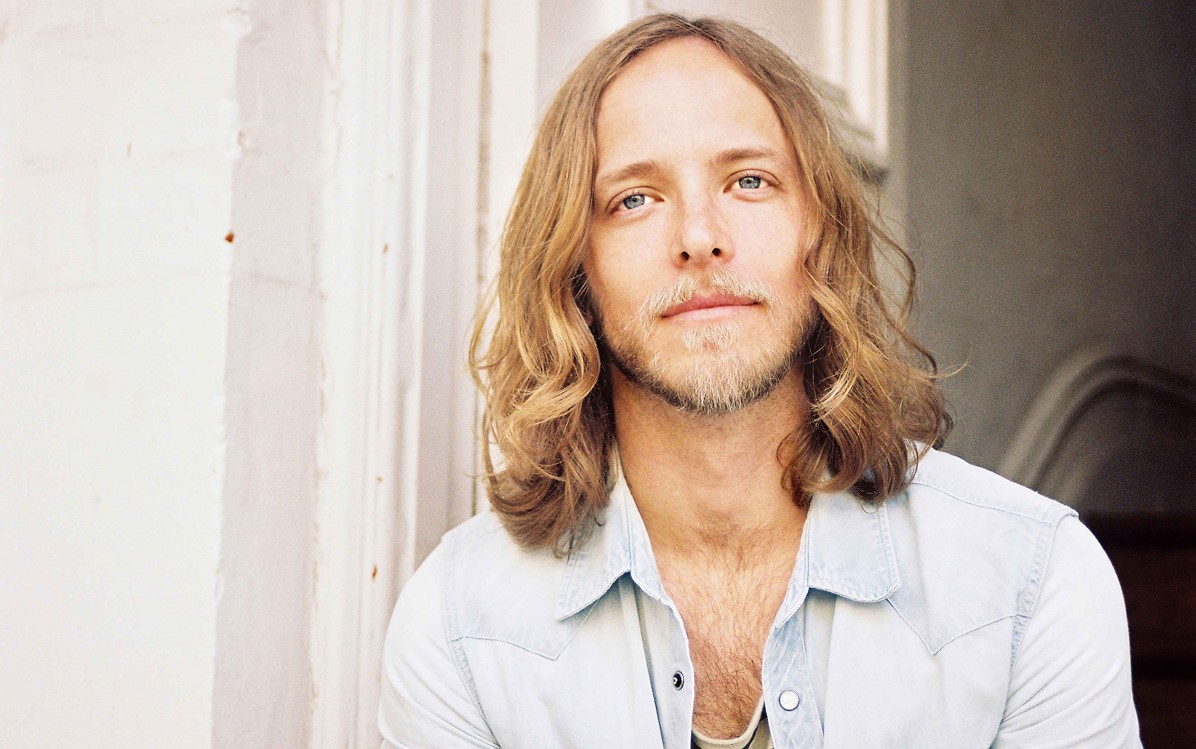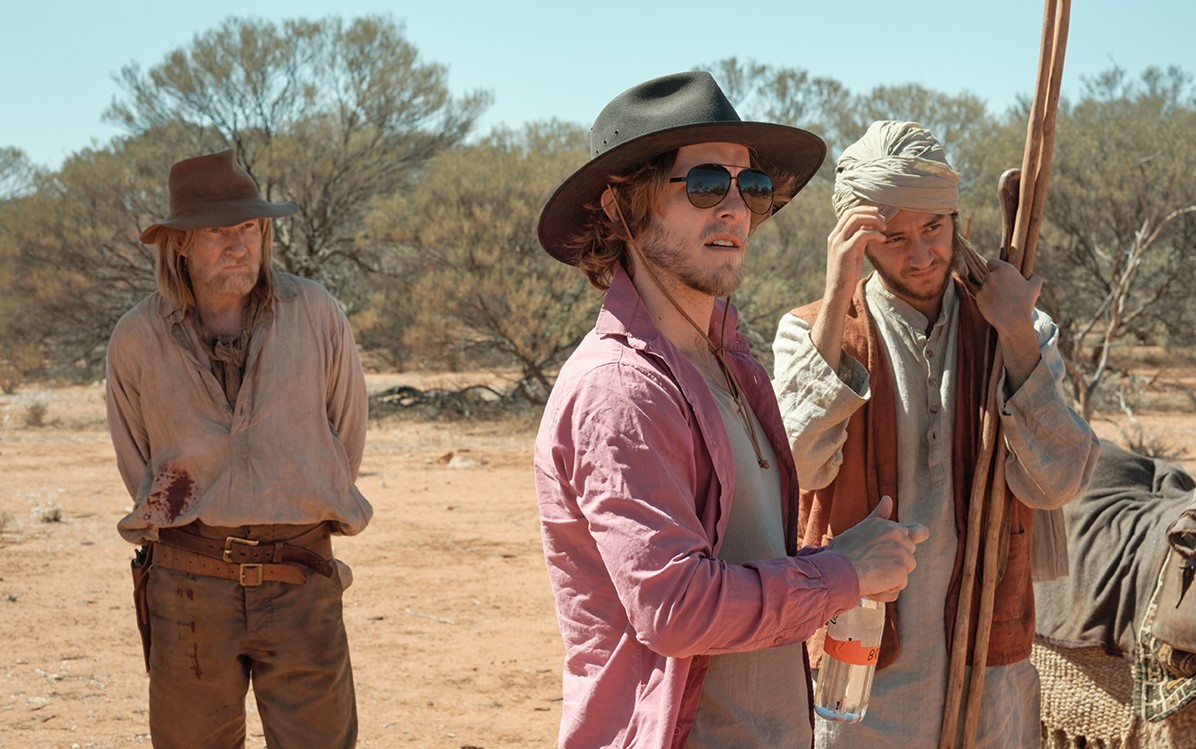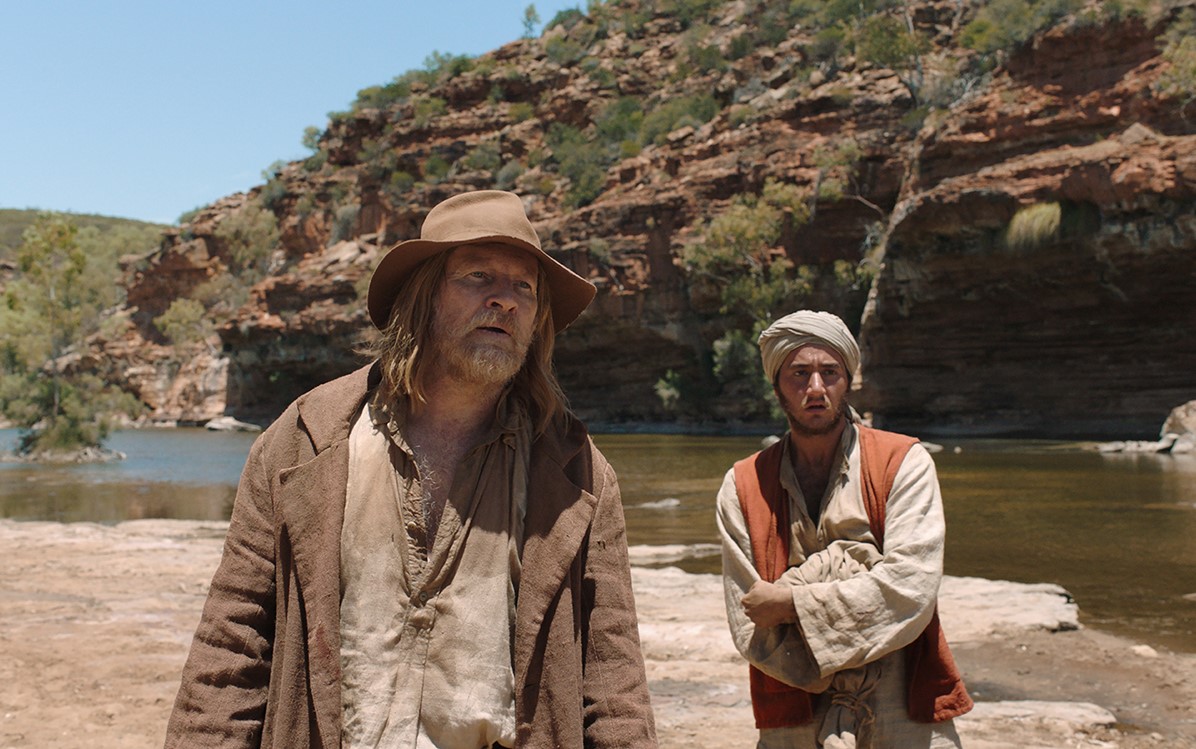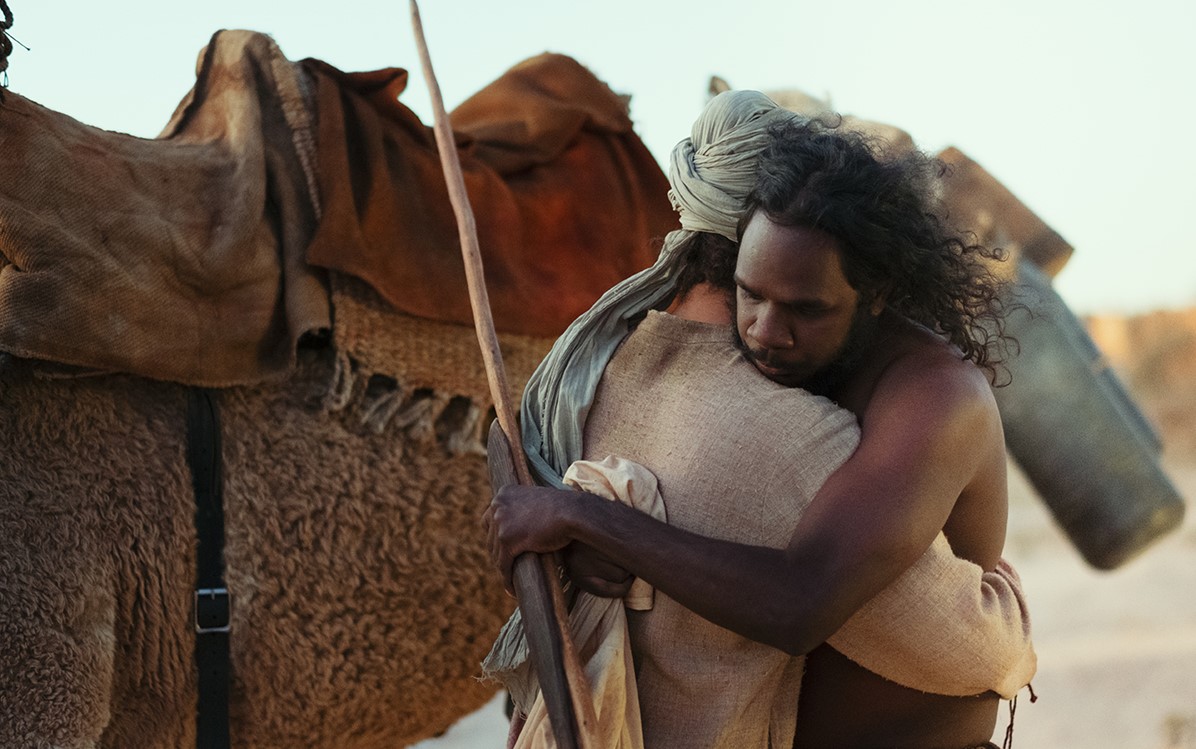
The Furnace | Q&A with Roderick Mackay
Uncovering Australian histories and bringing the endangered Badimaya language to the big screen
Roderick MacKay brings us a searing and reflective portrayal of the Islamic, Sikh and Hindu Cameleers during 1860s Australia with his brilliant film, The Furnace. A debutant director, he has already begun to make impressive waves and provide fresh discourse regarding lesser known Australian histories.
We sat down with MacKay to discuss the meticulous casting process, the challenges of filming in the harsh Australian climate and what we can expect from the upcoming film…
The Furnace is a truly compelling adventure about a little-known chapter in Australia’s history. Why did you so desperately want to tell it?
Roderick | In 2014, while researching a different project, I stumbled upon what seemed like the most unlikely of images – Afghan, Indian and Persian men wearing traditional garb, standing alongside a train of camels, but in the familiar Western Australian outback. Having lived in Australia my entire life, I was stunned to learn that these Islamic, Sikh and Hindu men had come to Australia from as early as the 1860s as cameleers. For me, it was like a painter discovering more colours to depict the otherwise tired colonial outback setting.
My initial subject of interest was suddenly far from mind, and I began searching for further information on who these mysterious men were and why they were here.
Amongst what little material was available, I came to learn that the ‘Ghans’, as they were incorrectly labeled, played a critical role in the formation of not just Western Australia but also the Nation. Horses and donkeys were not up to the task of navigating the vast and inhospitable Australian desert, so the cameleers and their camels provided the main source of freight and exploration, providing a lifeline between the colonies and settlements that sprung up around gold discoveries.
Most fascinatingly, they often formed bonds with Aboriginal language groups, drawing on their deep knowledge to navigate the desert. Without the cameleers, Australia’s inland development would have lagged for decades until advanced motorized transport and aerial aviation.
Sadly but unsurprisingly, they experienced much prejudice and were often engaged in indentured labor. I was astonished that this remarkable history wasn’t more known and, given its inherently cinematic qualities, how it hadn’t found its way to the big screen. There and then, I committed myself to the task.

You have shot this film in remarkable locations around WA. Can you tell us about what it was like on set? There must have been some challenges
R | The film is essentially a road movie, about these two very different characters on the run through a rugged desert wilderness. Typically in road movies, characters only spend a scene on two in one location before the journey continues and they move on to another setting, and we had to ‘cheat’ that journey within our budget by carefully choosing a diverse range of landscapes within a somewhat contained region.
Historically and aesthetically, the State’s Mid West was the perfect backdrop for the film.
But still, the location scouting was immense and took over a year, with my team and I crawling over vast tracts of Yamatji Badimia country around Mt Magnet and Yamatji Nanda country around Kalbarri. We got a huge amount of help from the locals and it was an incredible privilege to become so familiar with the ancient and truly spectacular landscapes of this region. But it is incredibly testing country to shoot a film in. We shot across October and November, so it’s generally 40 something degrees most days, even pushing into 50 degrees down in the gorges of Kalbarri, with our cast in thick woollen trooper coats at the time. The hot wind is fairly constant and kicks up finest red dust that gets into equipment and leaves you looking like you’ve been doused in paprika.
The flies are beyond relentless. And of course, the good spots are often pretty remote, so the travel time along dirt roads eats into your shooting time, and we only had 6 weeks to shoot what was a sprawling and hugely ambitious story on paper. Luckily we were able to find suitable locations not far out of Mt Magnet to build an entire town and prospectors’ camp. But then in Kalbarri, we had to have a helicopter sling loads of construction materials and filming equipment into the bottom of Ross Graham Gorge where we built a set and spent a week filming.
It was unreal and hugely taxing on everyone. But I’d do it all again.
There’s an incredible power to that land. It leaves you in awe and aware of its indifference to you - that you could be swallowed whole and vanish without a trace. It’s very grounding.

This film has a real Aussie Western vibe in the rich, recent vein of The Nightingale, Mystery Road, Sweet Country and The Proposition. What are your thoughts around why these more culturally sensitive outback tales are making such an impact on audiences today?
R | Having first arrived in South Australia from as early as the 1860s, the cameleers were in Western Australia to service the 1890s gold rush and, given this was a semi-lawless and gold crazed setting, the choice to draw on the western genre felt like an obvious one. I did this to help give the story an accessible form for audiences, but I never wanted the story to become a slave to the western genre. Because the film is representing a largely unknown chapter in Australia’s history, we could not let the genre's tropes cannibalise that core intent - they had to service it so it retained a very specific sense of place and authenticity - and this was a delicate balancing act. More so, I love mythology and parables and the western genre often shares this sentiment of storytelling.
That was what really enticed me about the genre - not so much the visual aesthetic of the western, but more so the way it constructs meaning and navigates morality, and how I could try harness that to tell a compelling story of a young Muslim man in the outback, for a wide audience.
For me, having now finished the film, this isn’t so much a western but an attempt at a new kind of outback frontier mythology.
To be honest, when I first embarked on this project six years or more ago, with a mind to draw on the western genre, Sweet Country, Mystery Road and The Nightingale didn’t exist. It’s interesting to ponder why, despite The Propositions’ acclaim and success back in 2005, a subsequent wave of outback westerns didn’t really sweep in until a decade or more now.
I guess cultural trends are cyclic and it feels like there has been a long period where Australian cinema was very urban and suburban focused, looking inwards to our cities. But now it’s opened back up again, to this big wide land of ours, much like in the 70s when Australia was producing films like The Chant of Jimmy Black Smith, Picnic at Hanging Rock and Wake in Fright.
Perhaps the interest audiences are showing in this recent series of frontier mythologies is demonstrative of a kind of national coming of age – a preparedness to acknowledge some confronting historic truths.
How did you approach research for this film? It must have been an intense process
R | Although the story of The Furnace is historic fiction, considerable research into the setting and consultation with the community groups represented in the film has been conducted over the last six years, in order to represent this little known side of Australia’s history with a spiritual authenticity. My own research consisted of books by authors and historians such as Hanifa Deen and Emeritus Professor Geoffrey Bolton, and many more. But beyond that, I recognised immediately that if I was to pursue this project, as a blonde-haired, blue-eyed white guy, I needed to submit myself and my intentions to these community groups, in order to gain their essential trust and input.
Throughout the project’s lengthy development, we have had multiple Muslim consultants, Sikh consultants and Indigenous consultants, including our associate producer, Gary Bonney, who is a Wongai Kaparn man from the southern gold fields of Kalgoorlie that neighbours the region the story is set in.
Also, the film’s dialogue is spoken across five different languages, including English, Pashto, Punjabi, Cantonese and the Indigenous Badimaya language. I only speak one of those languages, so obviously language consultants were critical and this was especially true for the Badimaya dialogue.
The cameleers often formed bonds with Aboriginal people, so it was critical that the film featured scenes of cameleers engaging with Aboriginal characters in their Indigenous language.
Very sadly, a year before we began filming, the last true speaker of the Badimaya language passed away, which meant Badimaya became a ‘sleeping language’. We no longer had access to this one elder’s knowledge to guide the translation, so a more holistic consultation process was needed, drawing on shared knowledge among the community to accurately undertake the translation. This was a complex and delicate task, but very fulfilling as it makes the Badimaya spoken in the film so much more meaningful and essential in helping to preserve the language, which has come so close to being lost.
On that, can you tell us more about the revival of the endangered Badimaya language? What was it like to have this sleeping language spoken by actors on screen for the first time ever? It must have been quite an incredible experience
R | We were lucky enough to have Yamatji Wajarri/Badimia man, Godfrey Simpson, and linguist academic James Bednal steering the community translation process with the team from Bundiyarra’s Irra Wangga Language Center based in Geraldton. Godfrey was particularly important as our Badimaya language coach for our cast, which included pretty intense training during pre-production and also being a real presence on set during filming to make sure the language was delivered correctly. Sometimes when I thought we had gotten a fantastic performance from our cast and I was happy to move on, Godfrey would say “nope”, due to a small mispronunciation of words, and we would go again until he was happy, so he was really in the driver’s seat for these Badimaya scenes. Years before the last true speaker passed away, Godfrey invested a lot of time learning as much of the Badimaya language as he could, so we were incredibly lucky to have him onboard.
The first time we finished a set up with Badimaya dialogue, and Godfrey approved it, we all began to cheer and applaud. It was incredibly special…
But the moment that stands out in particular was a campfire scene with a conversation between Egyptian actor Ahmed Malek playing Muslim Afghan character “Hanif”, Arnhem Land actor Baykali Ganambarr playing Badimia character “Woorak”, and Indian Australian actor Kaushik Das playing Sikh Punjab character “Jundah”, but spoken entirely in the Badimaya language.
I remember turning to Godfrey on set and seeing tears in his eyes… That’s the sort of moment I’ll hold onto and cherish for the rest of my life. As an artist, you want to do meaningful work, and there were moments during filming where we knew we were doing something for the first time.
Not just in terms of bringing the Badimaya language to the screen and doing our bit to preserve it, but in presenting it as the main language being spoken across three different cultures. For me, this has been the moving part of the entire filmmaking experience.

How did you go about searching for the cast given the unique use of many languages in this film?
R | In some instances it was tricky and we had our work cut out for us finding the right people and in other instances things really fell into place. For example, Baykali Ganambarr and Wakara Gondarra are part of the Djuki Mala dance troop and I remember seeing them perform at Perth Fringe Festival in early 2017 and thinking they’d be perfect to play characters “Woorak” and “Mandu” in the film.
Then Baykali was cast in The Nightingale and won the 2018 Marcello Mastroianni Award at The Venice Film Festival so I was suddenly worried that he was too famous to be in my little film! But he loved the script and the opportunity to help preserve the Badimaya language.
Trevor Jamieson is practically family, so we had always talked of him playing the Badimia elder “Coobering”. Similarly, Mahesh Jadu, who plays the cameleer “Sadhu”, is a dear friend who provided much emotional support to me over the long development journey of the project, so he was always going to be in the film too. I wrote the role of “Mal” for David Wenham, and was lucky enough to pitch the project to him in 2015 at CinefestOz. He signed on after reading the first draft of the script and has been a huge champion of the project over the years, even helping me draw the interest of our veteran producer, Tim White.
But there are almost thirty speaking roles in the film, so it wasn’t always this straightforward.
Hanif is the film’s central protagonist, and we were always looking for a very particular mix – strength mixed with an inherent innocence and vulnerability, a commanding presence coupled with an earthy kind of authenticity.
And there are a number of scenes where Hanif says very little so we needed an emotionally generous actor. We had reached this point where I was kind of at my wits end and so, as a joke, I Google searched “middle eastern actors” and like a needle in a haystack, found this clip of Ahmed Malek from an Egyptian TV show. It was in Arabic so I couldn’t understand anything but I was glued to his performance at the center of this really dramatic scene. I sent the clip on to my producers. They responded the same to me, and well… the rest is history. It then turned out that Ahmed Malek was a pretty big deal in the Arab World and The Furnace would become his international English-speaking debut. But the role of Hanif, a Pashtun Afghan, required him to also speak in Pashto and of course, the indigenous Badimaya language. That’s daunting stuff, but I really can’t admire enough how much he threw himself into it. It was remarkable.
What light do you think this film sheds on Australia for overseas audiences and for audiences at home?
R | First and foremost I hope audiences are entertained and moved. For all of the film’s loftier social-political commentary on race relations, nation building, truth telling and the search for identity in a new land, the film must first entertain and emotionally engage.
And hey, there is a lot of darkness and existential dread in the world right now, so I hope that despite the more confronting moments in this film, it ultimately leaves the audience with a sense of hope, which we need right now.
But certainly, I hope this film in some small way recalibrates international and local audiences’ perception of the “Outback” frontier to include the multitude of peoples that were here and whose contribution to Australia has been largely omitted from history. In doing so, I hope this film enacts a more inclusive Australian identity, so all migrant communities can walk a little taller as Australians, because other than Aboriginal people – the traditional custodians of the land – we’re all migrants or the sons and daughters of migrants.
Art doesn’t exist in a vacuum and Australia is a country that, to my mind, has only recently begun to willingly peer back into its past, warts and all, to better understand how it has arrived at the present.
This is essential to walk with clarity and confidence, as one people, towards a better future. And although The Furnace is focused specifically on Australia, there are of course strong parallels to the histories of many other colonial nations.
The Furnace screens at Lotterywest Films from 30 Nov – 6 Dec, BOOK NOW